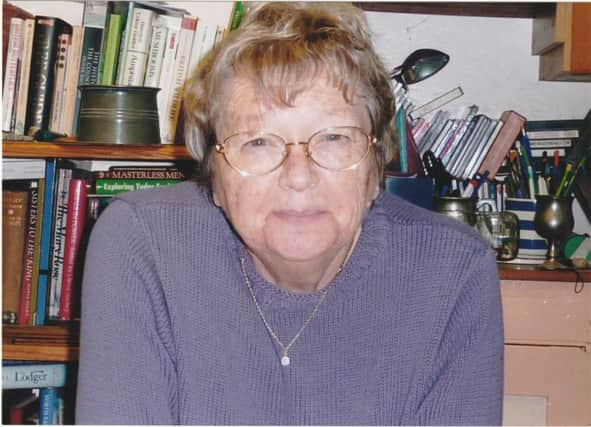Maureen was affectionately known as '˜Mrs History' due to her unrivalled knowledge of Leighton Buzzard and Linslade


Maureen Brown, of Mentmore Road, Linslade, was originally from South London and a journalist.
She moved to Linslade in 1975 and having been told by local people “there is not much history in Leighton” set about proving them wrong.
Advertisement
Hide AdAdvertisement
Hide AdShe joined the excavation of Grove Priory or La Grava in the south of the town and became fascinated by Leighton’s history as a Royal Manor and its subsequent ownership by the French Abbey of Fontevrault.
Using her journalist’s skills as a researcher she uncovered documents in the National Archives about events in Leighton written on vellum and unread for hundreds of years. She went to classes and learned medieval Latin and English in order to read them.
Maureen was an early believer that archaeological finds and documentary evidence needed to be considered together to get the full history of any site or building. She also believed in understanding what influenced the lives of local people and showing how they were impacted by events happening nationally.
She recruited friends to join her in projects and started the Leighton Linslade Local History Research Group in the 1980s. This produced a number of books about the town. They included, The Bassetts, Leighton Buzzard’s First Family, in 1989, The Old Pubs of Leighton Buzzard and Linslade, in 1994 and Around Leighton Buzzard & Linslade, in 1998.
Advertisement
Hide AdAdvertisement
Hide AdShe was also fascinated by the village of Old Linslade, and its ancient Holy Well and wrote the guide to Old Linslade Church of St Mary’s.
Despite the fact that a lung disease meant she was registered disabled and breathing difficulties prevented her returning to journalism she was both politically active and a good organiser.
She joined the Workers Education Association and both took part in and organized classes as well as legendary summer barbecues. During the resurgence locally of the Labour Party’s fortunes in the 1980s she acted as Press Office and sometimes agent.
Maureen was also active in the Leighton Buzzard Peace Campaign, which supported the Greenham Common women and she organised and joined busloads of protestors at cruise missile bases at Newbury and Upper Heyford.
Advertisement
Hide AdAdvertisement
Hide AdShe was part of team that provided food parcels and petrol money for Greenham’s women residents.
Later she was secretary of the Buckinghamshire Archaeological Society for seven years and in 2006 a founder member of the Leighton Buzzard and District Archeological and Historical Society. Originally with a membership of six it has grown to nearly 200 members.
She was known affectionately as Mrs History since she knew more than other member about the town.
During all these years she wrote numerous articles for historical journals and magazines of many organisations she belonged to including the Richard III Society.
Advertisement
Hide AdAdvertisement
Hide AdShe used her holidays to visit historical sites at home and abroad.
Maureen also helped Leighton-Linslade Town Council with setting up Living History Day and provided much information for leaflets and helped both organisations and individuals with their local history research.
It was at Maureen’s suggestion that the council called the land between the River Ouzel and the canal bought to provide access to Tiddenfoot lake Peace Meadow. It was to commemorate the peace treaty signed in 906 between the Anglo-Saxons and the Danes signed at the same spot - then called Yttingaford.
Last year her history of Leighton Buzzard’s Tudor House, the story of 17 to 21a Hockliffe Street was published. Reading the medieval court rolls in the Bedford Archives she took the history of what is probably Leighton’s oldest house and its residents back to the English Civil War.
Advertisement
Hide AdAdvertisement
Hide AdMaureen was always optimistic and cheerful despite her breathing difficulties and when ill took refuge in her enormous library.
She also had a large and impressive filing system about local people and events spanning many centuries and was anxious to pass on her knowledge and expertise.
She organised groups to transcribe documents including the early Mary Bassett School Log. She always made sure details of successful research were sent on to the Bedfordshire and Buckinghamshire Archive services for future historians to use.
Later this year her transcription of the Wing Churchwarden’s Accounts which she had been working on for 15 years is due to be published by the Buckinghamshire Record Society. Members of the Leighton Buzzard and District Archaeological and History Society, of which she remained a committee member until her death, hope to continue some of her other projects.
She leaves a husband, Paul and daughter Clara. Her funeral is on Wednesday, January 16 at 11.45am at St Barnabas Church, Linslade.